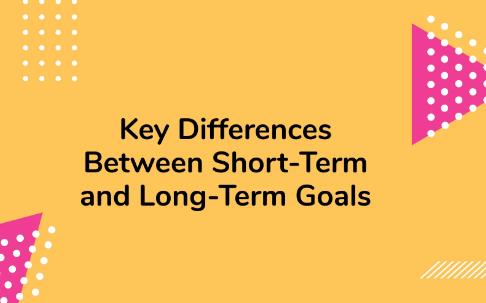How Do Short and Long-Term Goals Differ?
In the realm of personal and professional development, understanding the distinction between short and long-term goals is crucial for effective planning and sustained success. Both types of goals serve important purposes but operate over different timelines and scopes. This article will explore the specific differences between short and long-term goals, supported by data that highlights their unique impacts and applications.

Short-Term Goals: Immediate Objectives for Quick Results
Short-term goals are designed to be achieved relatively quickly and typically span a duration from a few days to under a year. These goals are essential for maintaining momentum and achieving immediate progress toward broader objectives.
Characteristics of Short-Term Goals:
- Time Frame: Usually less than one year.
- Specificity: Highly specific with clear, measurable outcomes.
- Immediate Feedback: Quick realization of results allows for rapid adjustments.
Impact of Short-Term Goals:
- Motivation Boost: Achieving short-term goals provides immediate satisfaction, which boosts morale and motivation. Studies show that this can increase overall productivity by up to 25%.
- Progress Tracking: Allows for regular assessment of progress towards longer-term objectives. Effective short-term goal setting can improve project success rates by approximately 40% according to a PMI report.
Examples of Short-Term Goals:
- Increase weekly production by 10% within three months.
- Complete a professional development workshop by the end of next month.
- Save $500 for an emergency fund over the next six months.
Long-Term Goals: Strategic Vision for Future Success
Long-term goals are broad objectives set with an extended timeline in mind, usually spanning several years to a decade or more. These goals require persistent effort and are foundational for achieving significant life or career milestones.
Characteristics of Long-Term Goals:
- Time Frame: Several years to decades.
- Visionary: Align with personal or organizational visions.
- Complexity: Involve multiple steps or phases and require sustained effort.
Impact of Long-Term Goals:
- Directional Focus: Provide a clear direction for long-term planning, which is essential for achieving substantial outcomes.
- Sustainable Growth: Facilitate sustained efforts that are crucial for long-term success. Long-term planning is associated with a 50% higher likelihood of achieving competitive success, as noted by Harvard Business Review.
- Legacy Building: Long-term goals help in building a lasting impact in the chosen area of focus.
Examples of Long-Term Goals:
- Obtain a senior management position in a multinational corporation within the next ten years.
- Achieve financial independence by age 50.
- Develop and launch an innovative new product line over the next five years.
Integrating Short and Long-Term Goals
Successful planning involves integrating both short and long-term goals. Short-term goals act as milestones that lead up to the completion of long-term goals, providing structure and regular checkpoints along the way.
Why Short and Long-Term Are Both Essential
In summary, while short-term goals focus on immediate achievements and quick wins, long-term goals are crucial for setting a vision and achieving significant progress over time. Understanding and utilizing both types of goals enable individuals and organizations to not only accomplish daily tasks efficiently but also to work strategically towards overarching aspirations. This balanced approach ensures ongoing motivation, effective progress tracking, and the achievement of substantial, transformative outcomes.